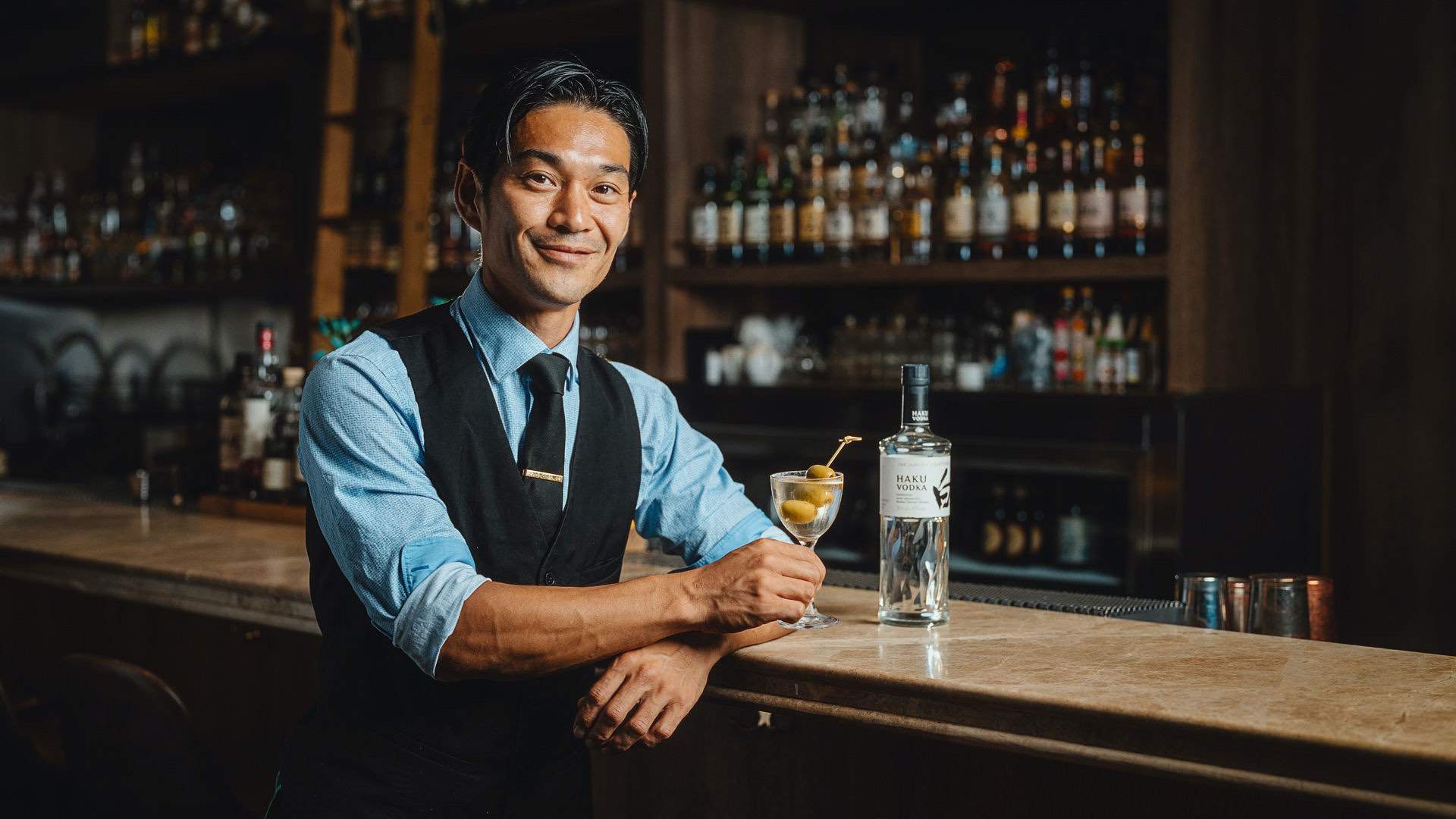
Banchō's Yoshi Onishi on the Art of the Martini
Dive into the craftsmanship, quality and signature pour of an exceptional Japanese spirit with an expert in Australia's beverage scene.
With one sip of Yoshi Onishi’s classic martini, a single word springs to mind: clean. And, when considered, it’s three things about the glassy sip that make it so: its crystal-clear appearance, the perfectly balanced flavour profile and the obvious quality of the ingredients. Watching Onishi produce the cocktail, the title of this feature is validated — the martini is in fact an art form.
The drinks expert heads up (and co-owns) Banchō, the intimate bar down a back laneway in Sydney’s Haymarket that celebrates premium Japanese spirits and the beauty of a carefully crafted beverage. “We want to work in synergy with the other businesses here,” Onishi opens. “Go pump some dumplings at Chinese Dumpling Master, then come round the corner and have a great drink.”
One such celebrated spirit is Haku Vodka, a craft vodka from the House of Suntory. Like all liquids from the famed Japanese distillery, this spirit has been made in concentrated pursuit of perfection using the highest quality of ingredients, and marries tradition and contemporary influences. The pour is born out of hakumai (Japanese white rice) — the inspiration behind the vodka’s name — that is fermented with rice koji and then double-distilled into a clear, nuanced rice spirit. The alcohol is then filtered through bamboo charcoal, removing impurities via absorption and beautifully shaping the flavour profile.
Together with Haku, we sat down with Onishi to delve into the art of the martini — and tasked him with concocting a classic Haku Martini in the process.
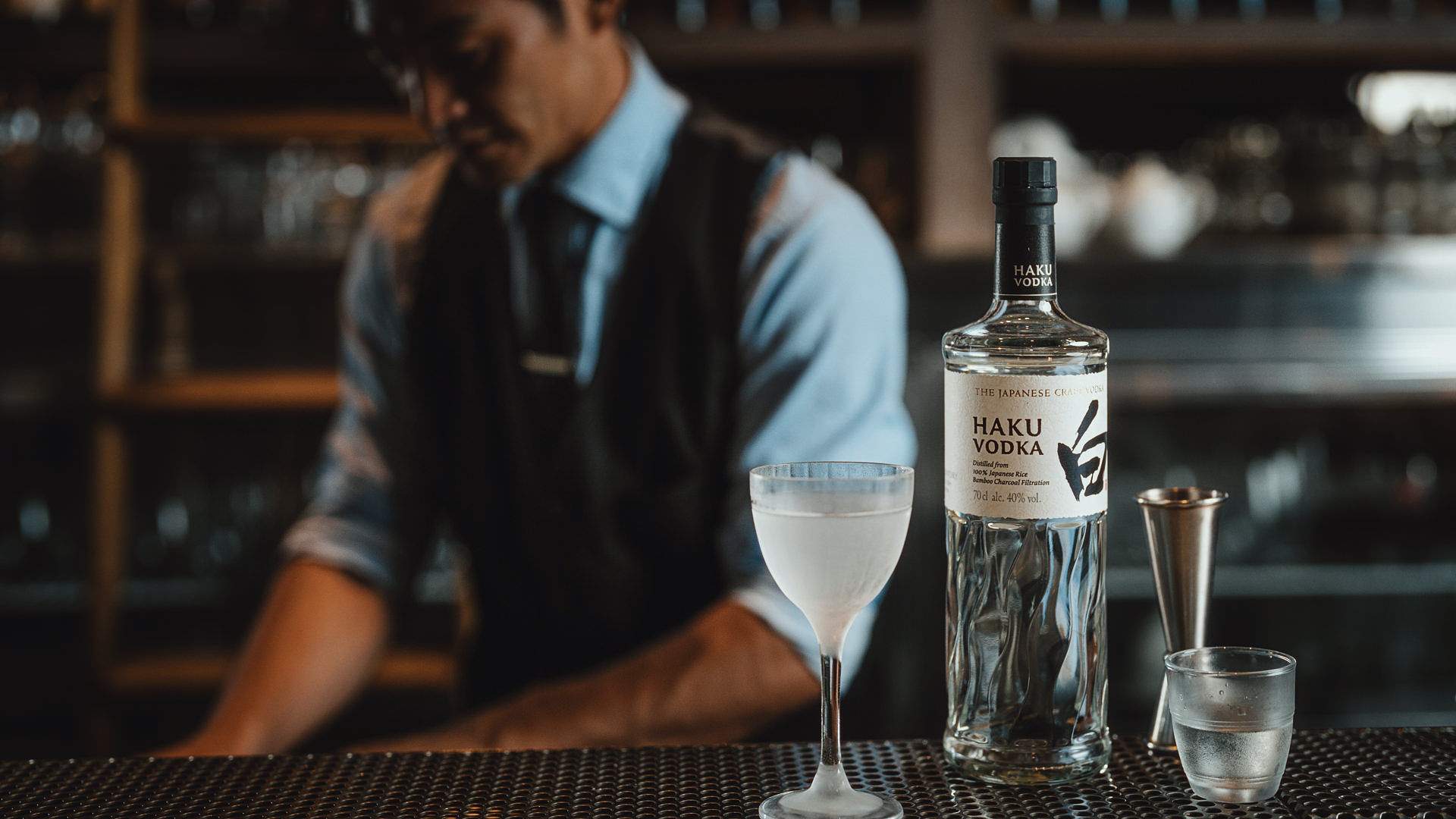
The secret's in the spirit
Banchō has a focus on premium Japanese spirits and the creation of artful cocktails. How does the quality and craftsmanship behind the spirit affect the sip?
“Japanese spirits tend to be a lot more subtle, but very complex — you don’t have to do too much to them to make them really stand out. And that works well with my cocktail direction, which is heavily sided towards classics. I believe less is more when it comes to a lot of cocktails.”
Do you see this element in the craft of Haku Vodka?
“With Haku Vodka, what I really like about it is the fact that they have this deep alignment with Japanese tradition. Sake, which is made with rice, uses koji as the fermenter in the starting period — Haku uses that same process until it goes into distillation. They distill it and then filter it through bamboo charcoal, which is quite interesting. In Japan there’s a culture around charcoal to filter their water and purify it. The bamboo also lends itself to a touch of this vanilla aroma. On top of that, the fact that Haku’s from rice really helps with the texture of the drink, and for something like a classic martini — which is all about texture and temperature — it works beautifully.”
What do you mean by a drink’s texture?
“Mouth-feel — you want it to almost feel buttery. It’s got the flavour on top, it’s smooth. That’s what you want in a martini, and that’s what you’re looking for in a vodka. With Haku, it’s not too dry and it’s not too spicy — that’s how it lends itself perfectly.”
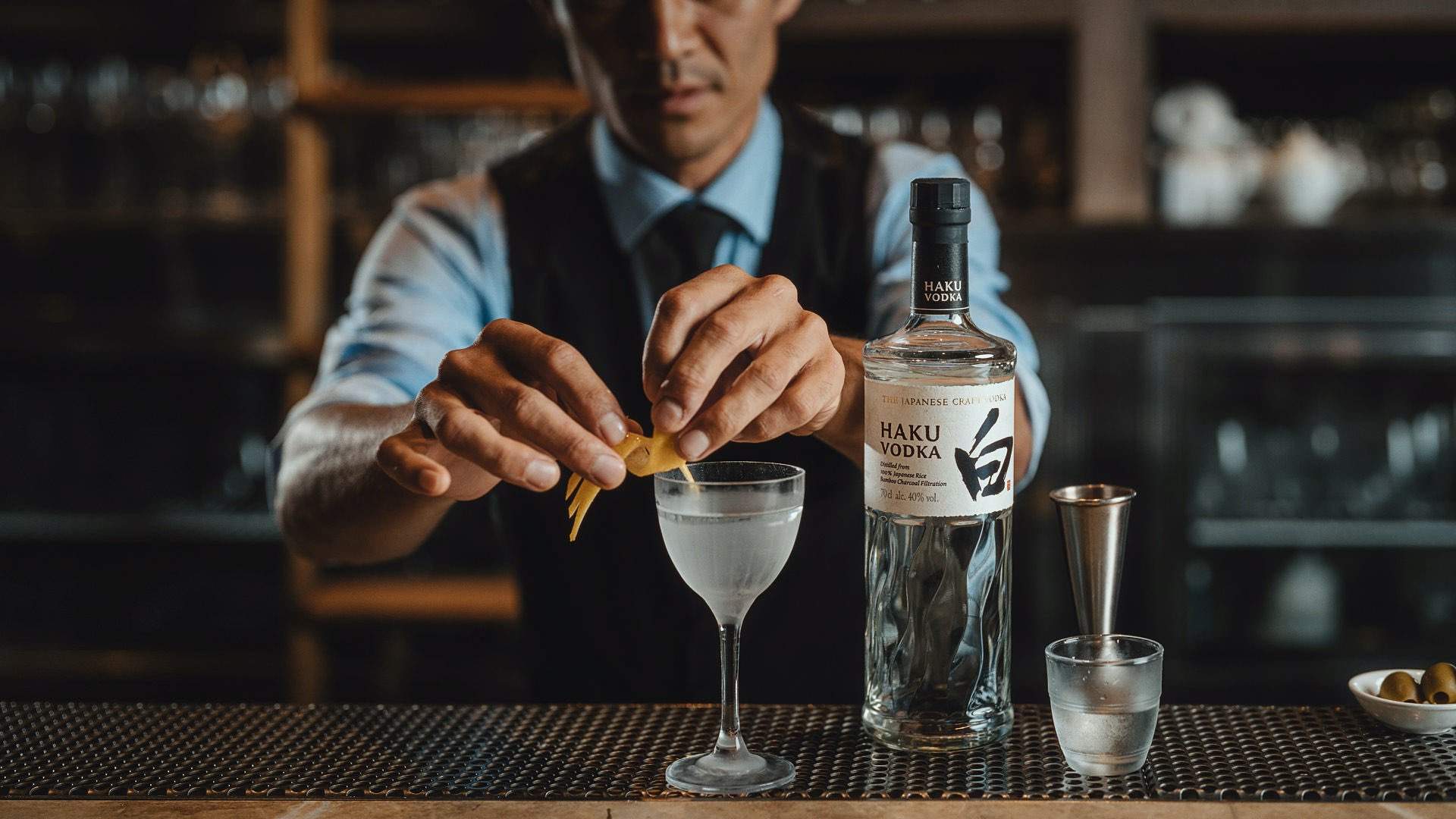
Can you describe your perfect Haku Martini? What are the non-negotiables?
“My personal favourite Haku Martini is dry with a splash of dry vermouth — nice, good-quality French dry vermouth. And I always like to add just a half dash of orange bitters to give it a little bit more of a spice element and round out the flavour profile. Fresh lemon zest is the key, as it cuts through some of the bitey-ness and just really freshens the martini.”
Can each martini taste completely different depending on the which spirit you use?
“Definitely. Depending on what the vodka’s made from, we can create something completely different. You want to think about your vodkas for specific styles of martini — dirty, dry, wet.”
What are the key flavour notes in Haku Vodka?
“Haku — being made from rice, which is starchy — is going to bring those flavour profiles too, and a bit more texture. There’s a bit of citrus, a bit of lemon peel, and it’s almost floral. And that’s all coming from rice, the base ingredient.”
Do you have a signature move with your martinis?
“With any drink that calls for citrus peel, I like to cut a little coin out and perfume the outside of the glass — anywhere your fingers are going to land. The reason I do that is because whenever you touch the glass, you’re going to get those oils on your hands, and your hands are always going to be close to your nose. It’s more about smelling than tasting, but those two work symbiotically.”
Speaking of glasses — does an ice-cold glass change the experience of a martini?
“For sure. The colder everything is, the more palatable it’ll be. Keep your glassware in the freezer — it makes it much more enjoyable.”
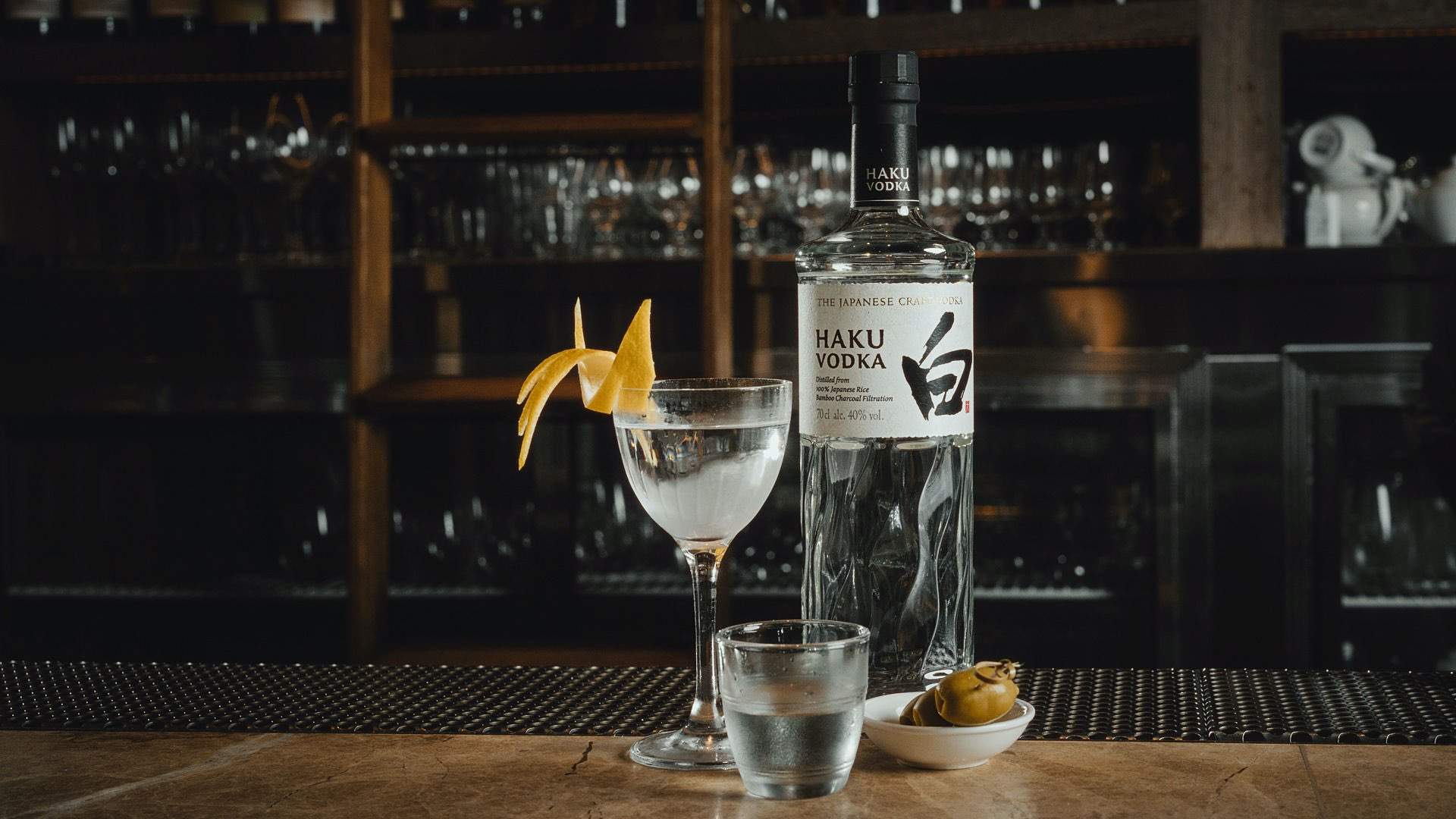
Yoshi Onishi's Classic Martini
CLASSIC MARTINI
“What I’m essentially looking for is dilution and temperature,” shares Onishi. “That’s the key to a good martini. It shouldn’t taste boozy — it should be cold, balanced, easy to drink and palatable.”
Ingredients
20ml vermouth
60ml Haku Vodka
Lemon twist to garnish
Ice
Method
“I start by making everything as cold as possible. Get your coupette into the freezer early and have the ice cubes ready to go. Start by putting your ice into the mixing glass, then pour about 20ml of dry vermouth in to coat the ice to start the dilution process.
In Japan, traditionally, they serve the vermouth in a sidecar, so we’ll do that today. Give it a touch of a stir, then pour the vermouth out into a small glass on the side in case anyone wants to drink it — essentially, the vermouth complements the herbaceous notes within the vodka and adds to the texture.
Now for the Haku Vodka: add 60ml to your vermouth-coated ice. Then, a half-drop of orange bitters to bring a little floral note. Then stir — it’s 20–30 revolutions, about 15–20 seconds. The faster you go the colder it’s going to get, and the colder your spirits are, the less of a bite your alcohol is going to have.
From the freezer, we’ll get our chilled coupette. Pour your martini through the strainer into your glass. Carve a little lemon twist and perfume the outside of the glass with the peel — spray the oils anywhere your fingers are going to land, not on the lip of the glass. Serve and enjoy.”
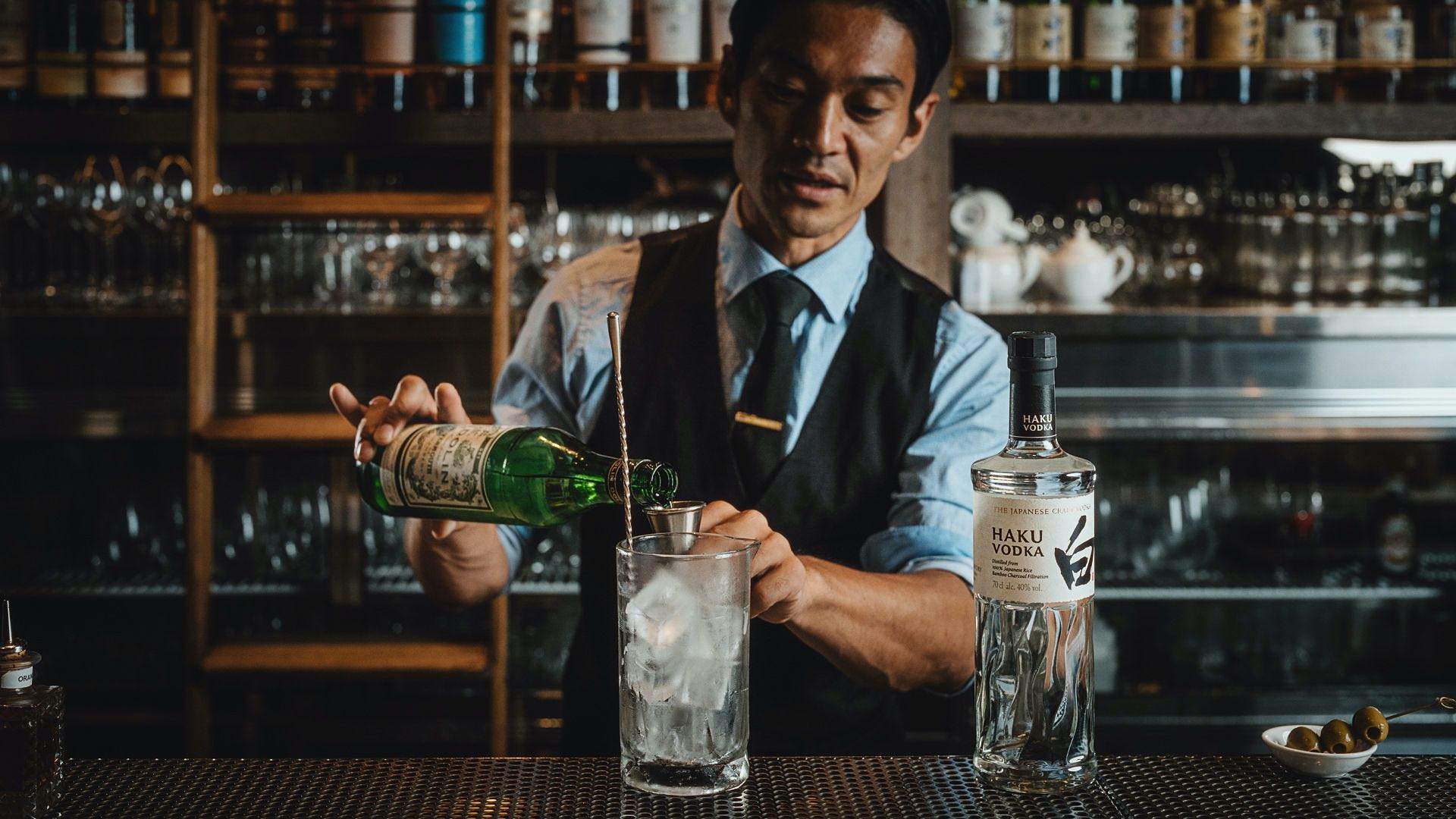
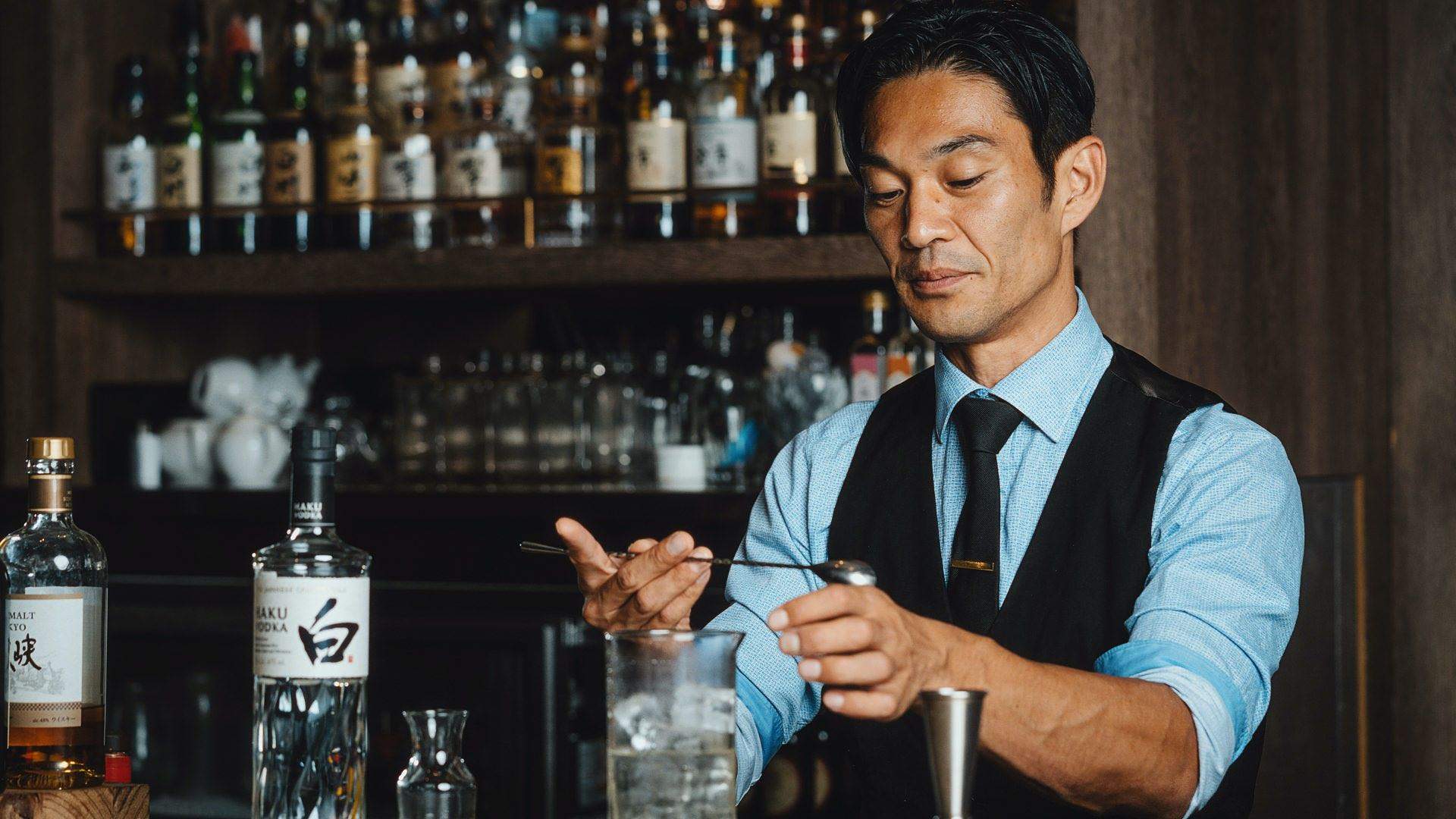
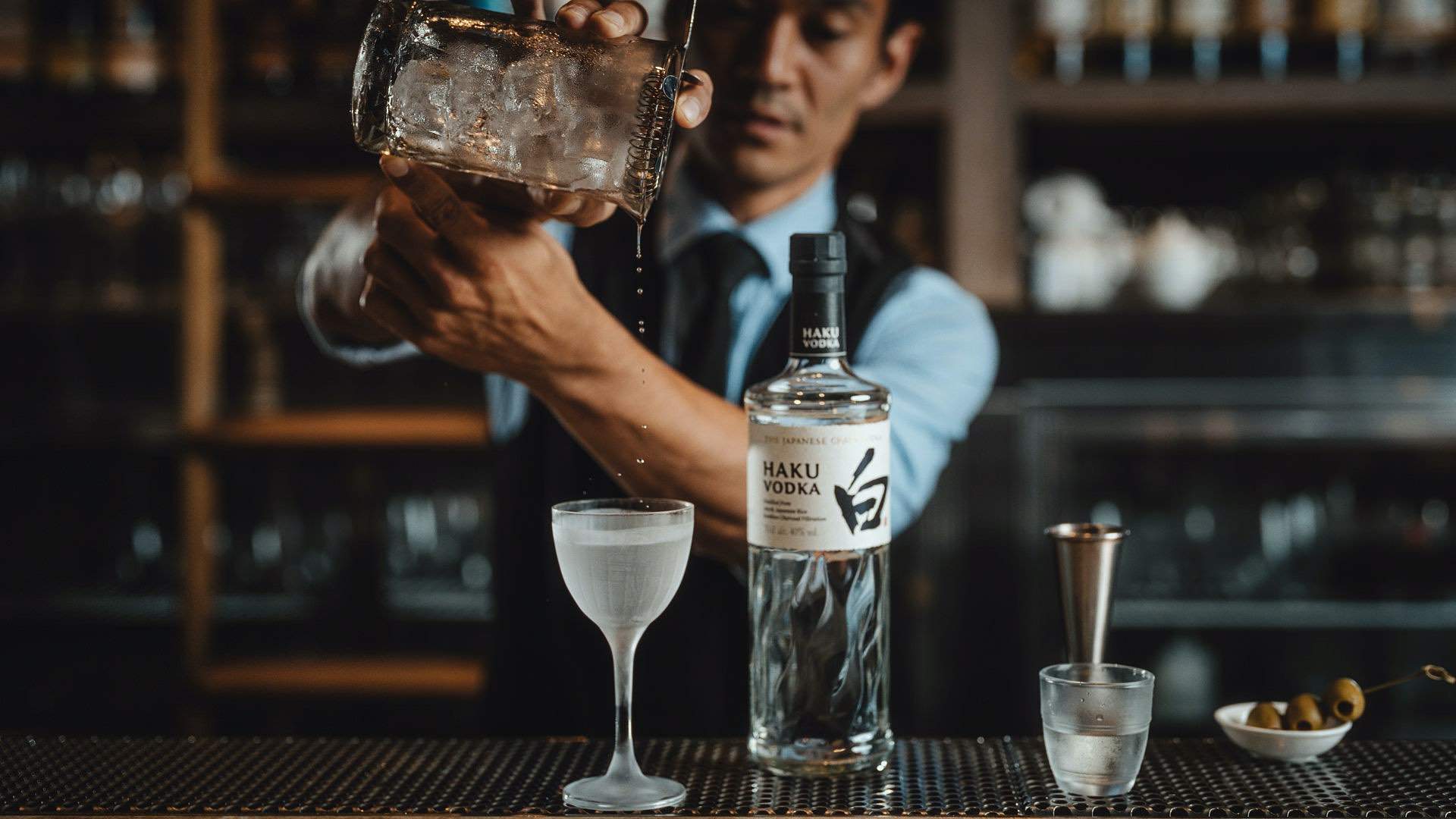

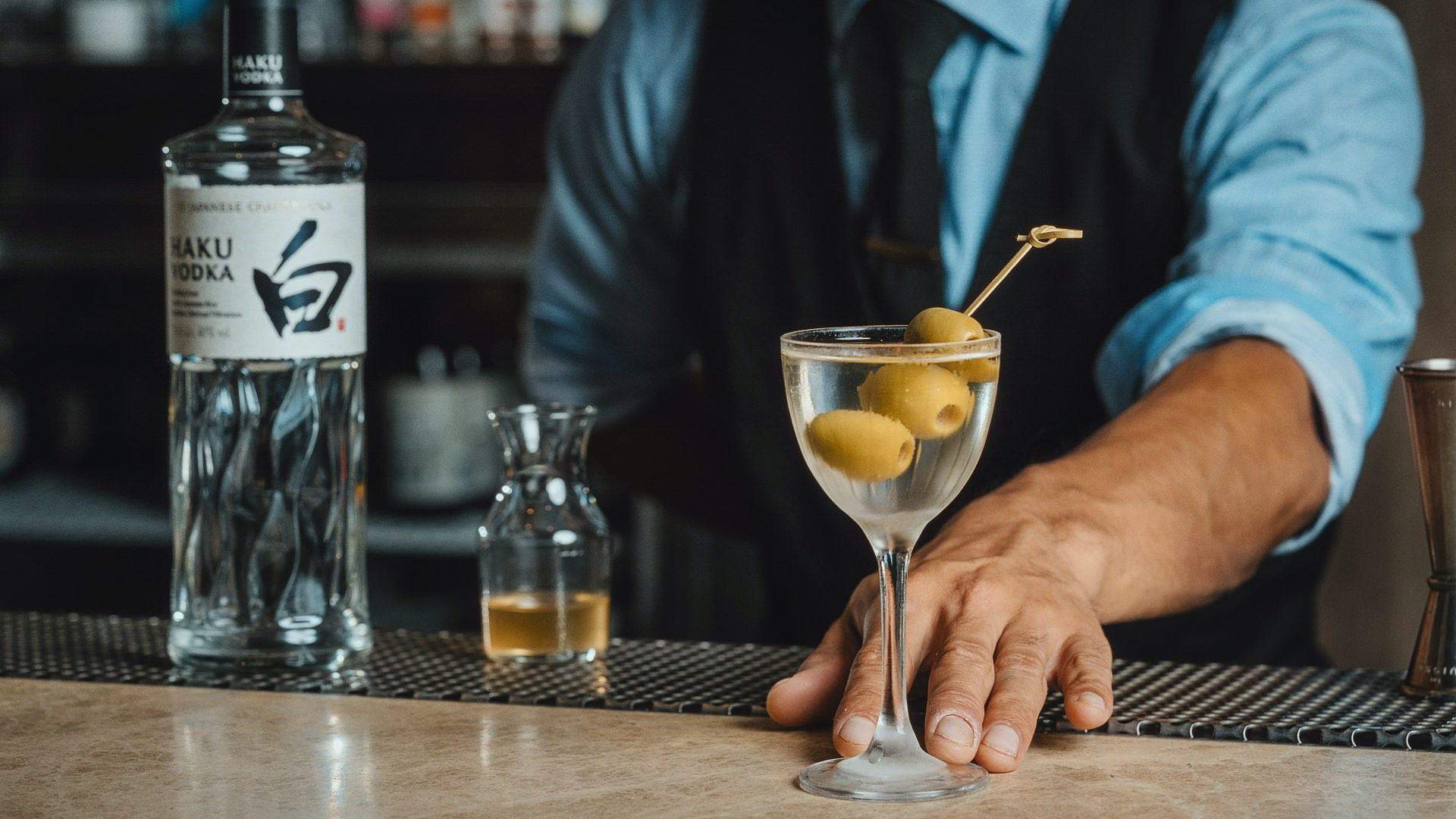
Do it dirty
Just as some vodkas work better in a dirty, classic, wet or dry martini, some, like Haku Vodka, are standout in any version.
“When people want their martini absolutely filthy, I’ll muddle the olives in too,” Onishi explains. “You want to push out the flavour of the olive but retain the backbone of the vodka. If somebody asks me for a dirty martini, I use about 15ml of olive brine, which is a relatively light dirty martini. It cuts back a bit of that salt.”
So, to get a little dirty, take Onishi’s above recipe and add a half-shot of olive brine when you add the vodka to the mixing glass. And, as Onishi notes, if you want it filthy, muddle four olives in as you stir your martini. Skewer three olives and place into a chilled coupette — then strain your martini over for a perfect serve.
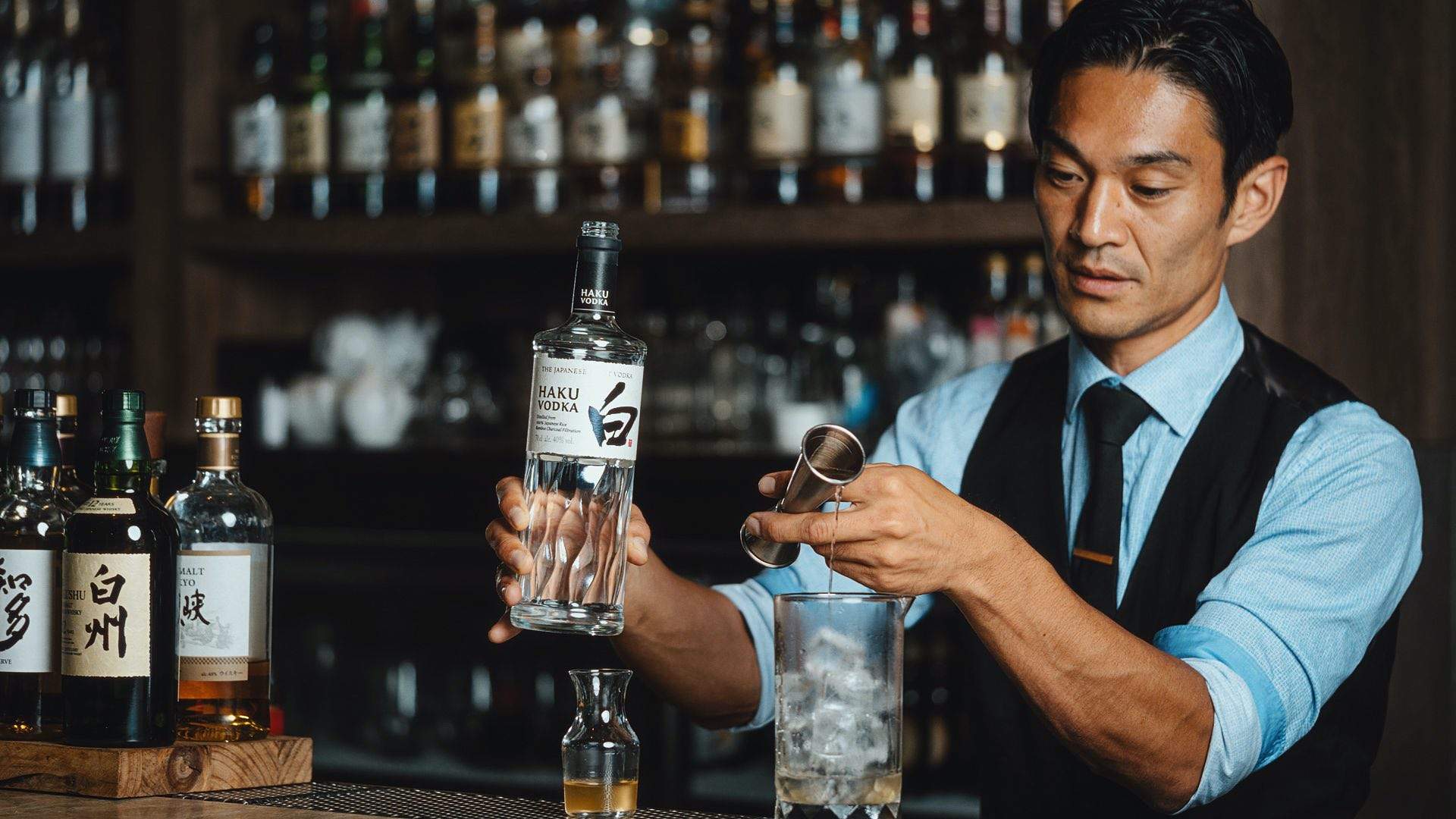
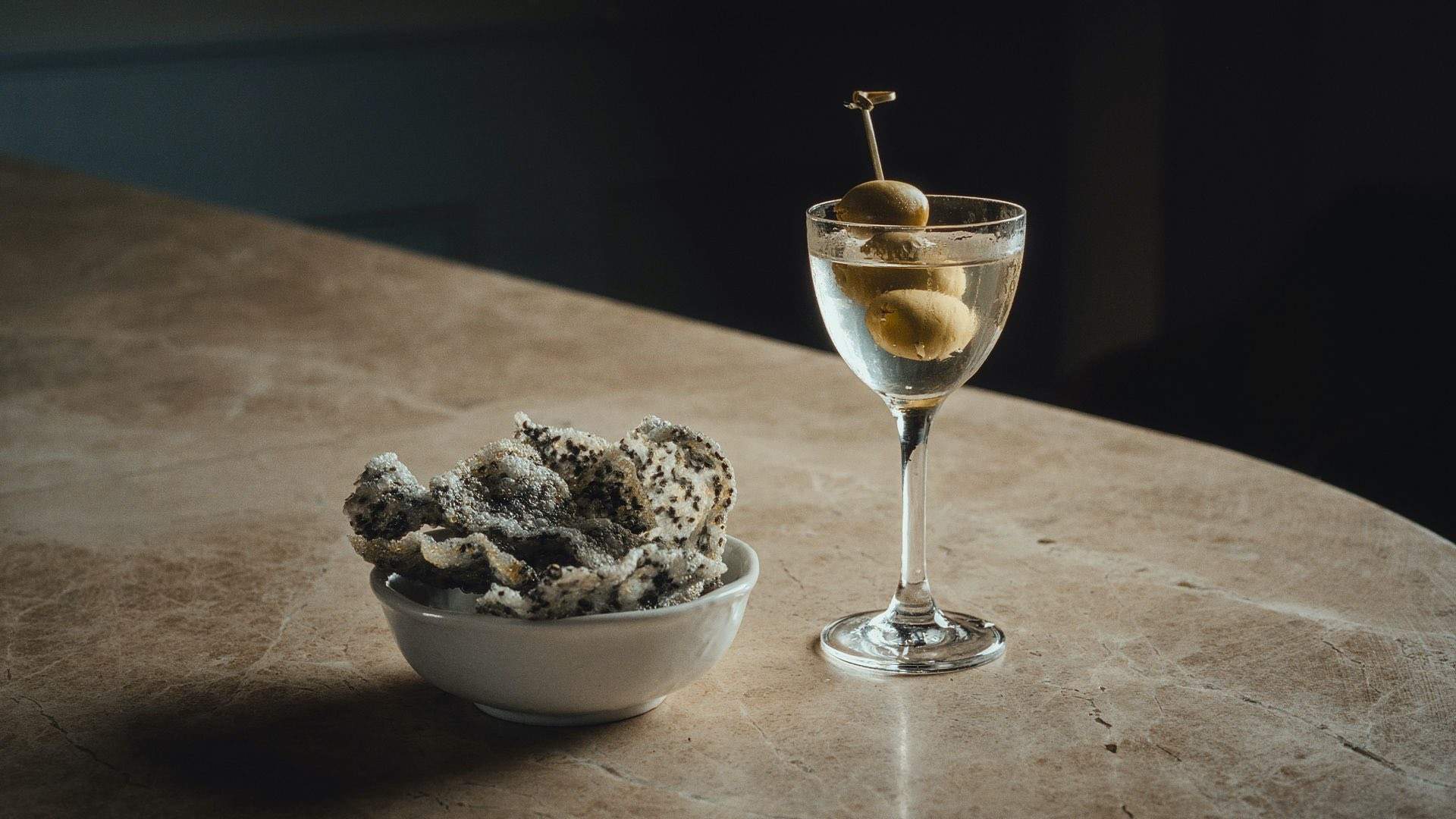
It’s clear that the simple classic is in fact an art form, and with Onishi behind the bar and Haku Vodka on pour, you’re sure to have an artful experience at Banchō. If you’re not Sydneyside, nab yourself a bottle and follow Onishi’s recipe closely — then sip and savour.
Haku Vodka’s signature serve is the Haku Martini, a drink that showcases the craftsmanship, nuanced flavour and exceptional quality of the premium Japanese liquid. To learn more, head to the website.
Images: Declan Blackall